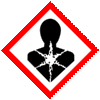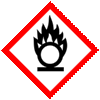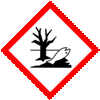Chromic acid and Chromium trioxide Manufacturers, with SDS GHS MSDS Sheet |
Supplier, Manufacturer, Exporter of Chromic acid and Chromium trioxide, Muby Chemicals of Mubychem Group, established in 1976, is the original manufacturers of Specialty Chemicals, Pharmaceutical Excipient, Fragrance Food & Flavor chemicals, Reagent Grade Chemicals, Shale Gas Fracturing Chemicals in India. Mubychem Group has several manufacturing facilities spread across Western India and world wide contacts and toll manufacturers. We are exporting globally to countries like USA, Canada, Europe, UAE, South Africa, Tanzania, Kenya, Egypt, Nigeria, Cameroon, Uganda, Turkey, Mexico, Brazil, Chile, Argentina, Dubai, Korea, Vietnam, Thailand, Malaysia, Indonesia, Australia, China, Germany, France, Italy Portugal, Bangladesh, etc. The products are offered as per required specifications and in correct shape and size in mm or meshs or microns as specified by the buyer. The participating units have one or more accreditations like FDA - cGMP and GLP approval, ISO-9001 Certified, "REACH" Registered, ISO-14001, ISO/IEC 17025, ISO-22000, FSSC 22000, ISO 45001, Kosher Certified, Halal Certified, HACCP, FSSAI. We offer Commercial Pure & IP BP EP Ph Eur USP NF JP FCC Food Grade Analytical Reagent Grades of Chemicals |
| Bookmark this Web Site -- or -- Email This Page Info to a Colleague or Yourself |
Search our website here:







Chromium trioxide: CAS Number: 1332-82-0, EINECS EC Number: 215-607-8, Molecular Formula: CrO3, Molecular Weight: 99.99, HS Code ---**
Chromic acid: CAS Number: 7738-94-5, EINECS EC Number: 231-801-5, Molecular Formula: H2CrO4 (H2Cr2O7 or Cr2O3 are dried forms), Molecular Weight: 118.01, HS Code ---**
How big is your requirement or how small
We serve it all.
Specifications, Safety Data Sheet, Manufacturing process details, Wholesale retail buy sell prices, Uses etc available on line in these pages for Chromic acid and Chromium trioxide.
For SDS MSDS Sheet Click
SDS MSDS Sheet of Chromic acid and Chromium trioxide Manufacturers
Chromium trioxide
Chromic acid Pure Suppliers

Chromium trioxide or Chromium(VI) oxide or Chromic anhydride is an inorganic compound with the formula CrO3. It is the acidic anhydride of chromic acid and is sometimes marketed under the same name. Chromic acid is used as an oxidizing agent and catalyst for certain reactions. Chromic acid is used as an intermediate in chromium plating. It is used in ceramic glazes, colored glass. This compound is a dark-purple solid under anhydrous conditions, bright orange when wet and which dissolves in water concomitant with hydrolysis.
General Properties and Specifications of Chromium trioxide anhydrous:
Appearance: Dark red flakes, granules, or powder.
Assay as CrO3: 99.7% minimum.
CAS: 1332-82-0
EINECS EC Number: 215-607-8
Sodium: 2000 mg/kg maximum.
Iron: 10 mg/kg maximum.
Chloride: 10 mg/kg. maximum.
Insoluble matter: 15 mg/kg.
General Properties and Specifications of Chromic acid:
Appearance: Red liquid or flakes and powder depending on assay as Cr2O3.
CAS: 7738-94-5
EINECS EC Number: 231-801-5
Molecular formula: H2CrO4 (H2Cr2O7 or Cr2O3 are dried forms).
Molecular weight: 118.01
Melting point: 197C.
Boiling point: 250C.
Relative density: 1.2
Solubility: Soluble in water.
The solution is available in various percentages as agreed between the buyer and the seller.
For Original Monographs of IP Indian Pharmacopoeia BP British Pharmacopoeia USP US Pharmacopoeia FCC Food Grade product, please check with the respective web-pages or books.
We also manufacture and supply as under:
Chromic acid & Chromium trioxide
Manufacturers:
MUBY CHEMICALS
Ambernath Mumbai, Ankleshwar Gujarat, India
TEL: (OFFICE) +912223770100, +912223726950
Current Date Time in India GMT+5:30
e-mail: info@mubychem.com
USA, Canada, Mexico and other American neighbouring buyers may
e-mail: us@mubychem.com
Call toll-free 1-877-682-9243 (1-877-MUBYCHEM)

Copyright and Usual Disclaimer is Applicable.
Last 22 November, 2025




Exporters to USA Canada UAE Europe South Africa Tanzania Kenya Uganda Egypt Nigeria Turkey Mexico Brazil Argentina Chile Dubai etc.
Global or International Suppliers, Exporters, Importers, Manufacturers
I shall pass through this world, but once. If therefore, there is any good that I can do, or if there is any favor that I can show to a fellow human being, let me do it now. Let me not defer or neglect it. For I shall not tread this way again
Chromium trioxide & Chromic acid SDS, Safety Data Sheet
MSDS Sheet, Material Safety Data Sheet 19-June-21
1. Product & Company Identification
Product/Synonyms: Chromium trioxide & Chromic acid.
CAS No.: 1332-82-0 for main ingredient. (Water is the diluent if at all).
EINECS EC Number: 215-607-8
Molecular Weight: 99.99 for main ingredient.
Chemical Formula: CrO3 for main ingredient.
Intended Use: Oil & Gas Wells fracturing and Industrial Manufacturing.
Recommended uses and uses advised against (if any): Industrial and Laboratory use only.
SUPPLIER: As per letterhead.
2. Hazards Identification
GHS, Globally Harmonized System Classification in accordance with 29 CFR 1910
Classification according to Regulation (EC) No 1272/2008
Oxidizing solids Category 1, H271
Acute Toxicity Oral Category 3, H301
Acute Toxicity Dermal Category 3, H311
Skin Sensitization Category 1, H317
Skin corrosion Sub-category 1B, H314
Acute Toxicity Inhalation Category 2 H330
Respiratory Sensitization Category 1, H334
Mutagenicity Category 1B, H340
Carcinogenicity Category 1A, H350
Health, Specific target organ toxicity - Single exposure, Category 1, H372
Aquatic Chronic Category 1, H410
Labeling according to GHS USA & Regulation (EC) No 1272/2008
GHS Label Elements  Toxic | GHS Label Elements  Health Hazard | GHS Label Elements  Corrosive |
GHS Label Elements  Oxidizer | GHS Label Elements  Marine Pollutant |
Signal Word: Danger
Hazard Statements:
H271 May cause fire or explosion; strong oxidizer.
H301+H311 Toxic if swallowed or in contact with skin
H314 Causes severe skin burns and eye damage.
H317 May cause an allergic skin reaction
H372 Cause damage to organs through prolonged or repeated exposure.
H330 Fatal if inhaled
H334 May cause allergy or asthma symptoms or breathing difficulties if inhaled
H340 May cause genetic defects
H350 May cause cancer (Inhalation)
H410 Very toxic to aquatic life with long lasting effects.
Precautionary Statements
P234: Keep only in original container.
P260: Do not breathe dust/fume/gas/mist/vapors/spray.
P264: Wash ... thoroughly after handling.
P270: Do not eat, drink or smoke when using this product.
P273: Avoid release to the environment.
P280: Wear protective gloves/protective clothing/eye protection/face protection.
P301+P312: IF SWALLOWED: Call a POISON CENTER or doctor/physician if you feel unwell.
P302+P352: IF ON SKIN: Wash with soap and water.
P305+P351+P338: IF IN EYES: Rinse cautiously with water for several minutes. Remove contact lenses, if present and easy to do. Continue rinsing.
P312: Call a POISON CENTER or doctor/physician if you feel unwell.
P314: Get Medical advice/attention if you feel unwell.
P330: If swallowed, rinse mouth.
P337+P313 If eye irritation persists: Get medical advice/ attention.
P361: Call a POISON CENTER or doctor/physician if you feel unwell.
P360: Rinse immediately contaminated clothing and skin with plenty of water before removing clothes.
P363 : Wash contaminated clothing before reuse.
P390: Absorb spillage to prevent material damage.
P391: Collect spillage.
P404: Store in a closed container.
P405: Store locked up.
P501: Dispose of contents/container in accordance with local/regional/national/international regulations.
Classification according to EU Directives 67/548/EEC or 1999/45/EC:
Hazard Symbols:
T toxic
C Corrosive
N Dangerous for the environment.
O Oxidizer
Risk Phrases:
R8 Contact with combustible material may cause fire.
R24/25 Toxic in contact with skin and if swallowed.
R27 Very toxic in contact with skin.
R34 Causes burns.
R41 Risk of serious damage to eyes.
R42 May cause sensitization by inhalation.
R43 May cause sensitization by skin contact.
R46 May cause inheritable genetic damage.
R48 Danger of serious damage to health by prolonged exposure.
R49 May cause cancer by inhalation.
R51/53 Toxic to aquatic organisms, may cause long-term adverse effects in the aquatic environment.
3. Composition/Information on Ingredients
Product/Synonyms: Chromium trioxide & Chromic acid.
CAS No.: 1332-82-0 for main ingredient. (Water is the diluent if at all).
EINECS EC Number: 215-607-8
4. First Aid Measures
Always seek medical attention after first aid measures are provided.
Inhalation: Remove to fresh air. If not breathing, give artificial respiration. If breathing is difficult, give oxygen. Get medical attention.
Ingestion: If swallowed, do not induce vomiting. Give large quantities of water. Never give anything by mouth to an unconscious person. Get medical attention immediately.
Skin Contact: In case of contact, immediately flush skin with plenty of water for at least 15 minutes while removing contaminated clothing and shoes. Cover the irritated skin with an emollient. Cold water may be used. Wash clothing & shoes before reuse. Get medical attention.
Eye Contact: Check for and remove any contact lenses. In case of contact, immediately flush eyes with plenty of water for at least 15 minutes. Cold water may be used. Get medical attention.
5. Fire Fighting Measures
Fire: Not combustible, but substance is a strong oxidizer and its heat of reaction with reducing agents. Heating will release chlorine dioxide or hydrochloric acid.
Explosion: An explosion hazard when mixed with finely powdered organic matter, metal powder or reducing agents.
Fire Extinguishing Media: Use water spray, dry chemical, carbon dioxide, or chemical foam. Use means suitable for extinguishing surrounding fire.
Special Information: In the event of a fire, wear full protective clothing and NIOSH-approved self-contained breathing apparatus with full face piece operated in the pressure demand or other positive pressure mode. At high temperatures under fire conditions, it may produce toxic or irritating fumes. Fire-extinguishing work is done from the windward and the suitable fire-extinguishing method according to the surrounding situation is used. Uninvolved persons should evacuate to a safe place.
Hazardous Combustible Products: Do not allow this product to dry on cloth or clothing. Oxidation can cause a fire hazard. Chromium compound and fumes may will evolve.
6. Accidental Release Measures
Personal precautions, protective equipment, environmental precautions and emergency procedures: Avoid breathing dust/fumes/gas/mist/vapors/spray. Use individual protective equipment (waterproof boots, suitable protective clothing, safety glasses, etc.). Restrict unprotected personnel from the area. Prevent any contact with hot surfaces. Do not approach facing the wind. Do not touch the spilled material. Keep away from drains, surface and groundwater and soil.
Methods and materials used for containment Cleanup procedures and Storage:
Small Spill: Use appropriate tools to put the spilled solid in a convenient waste disposal container.
Large Spill: Contain spilled material. It is an oxidizing material. Stop leak if without risk. Avoid contact with a combustible material (wood, paper, oil, clothing ...). Do not touch spilled material. Prevent entry into sewers. Eliminate all ignition sources.
Evacuation procedures must be placed into effect. Evacuate all non-essential personnel. Hazardous concentrations in air may be found in local spill area and immediately downwind. Utilize emergency response personal protective equipment prior to the start of any response. This product may represent an explosion hazard. Remove all sources of ignition, such as flames, hot glowing surfaces, or electric arcs. Stop source of spill as soon as possible and notify appropriate personnel. Notify all downstream water users of possible contamination. Spill materials may be covered using clay, soil, or non-flammable commercial absorbents.
7. Handling and Storage
Precautions for safe handling: Apply according to good manufacturing and industrial hygiene practices with proper ventilation. Wash thoroughly after handling. Do not drink, eat, or smoke while handling. Avoid contact with skin, eyes, and clothing. Use with adequate ventilation. Minimize dust generation and accumulation. Avoid breathing dust/fumes/gas/mist/vapors/spray. Avoid contact with eyes, skin, and clothing. Keep container tightly closed. Avoid ingestion and inhalation. Use individual protective equipment (waterproof boots, suitable protective clothing, safety glasses, etc.). Prevent any contact with hot surfaces. Containers of this material may be hazardous when empty since they retain product residues.
Conditions for safe storage, including any incompatibilities: Store in cool, dry, and ventilated area away from heat sources and protected from sunlight in tightly closed original container. Keep air contact to a minimum. Store protected from heat, sparks and ignition sources and incompatible materials. Avoid contact with skin and eyes. Avoid inhalation of dust/mist/vapor. Do not store with incompatible materials like reducing agents, organic material and powdered metals, heat, acids, bases. Isolate from heat and sun. Separate from combustibles, organic or other readily oxidizable materials. Avoid storage on wood floors.
8. Exposure Controls/Personal Protection
Airborne Exposure Limits:
USA OSHA: 0.005 mg/m³ OSHA PEL (TWA) (mg/m³)
Maintain Shower, Eye Wash and use under good ventilation only.
Ventilation System: A system of local and/or general exhaust is recommended to keep employee exposures as low as possible. Local exhaust ventilation is generally preferred because it can control the emissions of the contaminant at its source, preventing dispersion of it into the general work area.
Personal Respirators (NIOSH Approved): For conditions of use where exposure to dust or mist is apparent and engineering controls are not feasible, a particulate respirator may be worn. For emergencies or instances where the exposure levels are not known, use a full-face positive-pressure, air-supplied respirator.
Skin Protection: Wear protective gloves and clean body-covering clothing.
Eye Protection: Use chemical safety goggles and/or full-face shield where dusting or splashing of solutions is possible. Maintain eye wash fountain and quick-drench facilities in work area.
Other Control Measures: Maintain good housekeeping in work area. Dust deposits on floors and other surfaces may pick up moisture and cause the surfaces to become slippery and present safety hazards. Handle in accordance with good industrial hygiene and safety practice.
9. Physical and Chemical Properties
Appearance: Dark red flakes, granules, or powder or it’s solution.
Odor: Not available.
Odor threshold: Not available.
pH: Not available.
Relative density: Not available.
Boiling Point: Not available.
Melting Point: Not available.
Flash point: Not available.
Auto-ignition temperature: Not available.
Decomposition temperature: Not available.
Upper/lower flammability or explosive limits: Not available.
Vapor pressure: Not available.
Vapor density: Not available.
Evaporation rate: Not available.
Flammability (solid, gas): Not available.
Partition coefficient: n-octanol/water: Not available.
Solubility: Soluble in water.
Viscosity: Not available.
Molecular Weight: 99.99 for main ingredient.
Chemical Formula: CrO3 for main ingredient.
10. Stability and Reactivity
Stability: It is stable under ordinary conditions of use and storage.
Hazardous Decomposition Products: Decomposed by heat, sunlight, and organic substances. Burning may produce chlorine and its oxide and hydrochloric acid.
Hazardous Polymerization: Will not occur.
Incompatibilities: Reducing agents, organic material and powdered metals, heat, acids, bases.
Conditions to Avoid: Heat, combustible materials, and incompatibles.
11. Toxicological Information
LD50 oral rat: 50 mg/kg on 100% basis.
LD50 dermal rat: 55 mg/kg on 100% basis.
LC50 inhalation rat (mg/l): 0.217 mg/l 4 hours.
Carcinogenic Effects: May cause cancer (Inhalation).
Teratogenic Effects: Not available.
Mutagenic Effects: May cause genetic defects.
Developmental Toxicity: Not available.
Reproductive Effects: No information available.
12. Ecological Information
Environmental Fate:
LC50 fishes 1: 40 mg/l (96 h; Colisa fasciatus)
EC50 Daphnia 1: 10 - 100 mg/l (48 h; Daphnia magna).
Biodegradability: Sodium chlorite in water will eventually degrade to sodium chloride. Sodium chlorite in contact with acidic soil could produce chlorine dioxide.
Environmental Toxicity: This product is toxic to fish and aquatic organisms. Do not discharge effluent containing this product into bodies of water unless in accordance with law.
13. Disposal Considerations
Whatever cannot be saved for recovery or recycling should be handled as hazardous waste and sent to a RCRA approved waste facility. Processing use or contamination of this product may change the waste management options. State and local disposal regulations may differ from federal disposal regulations. Dispose of container and unused contents in accordance with law.
14. Transport Information
DOT USA, TDG Canada & ADR/RID Europe
Proper Shipping Name: CHROMIUM TRIOXIDE
UN/NA: UN1463; Hazard Class: 8; 6.1; Packing Group: II
International Water IMO/IMDG & AIR IATA
Proper Shipping Name: CHROMIUM TRIOXIDE
UN/NA: UN1463; Hazard Class: 8; 6.1; Packing Group: II.
15. Regulatory Information
USA
California Prop 65: Listed.
Section 16 - Additional Information
European Labeling in Accordance with EC Directives:
H271 May cause fire or explosion; strong oxidizer.
H301+H311 Toxic if swallowed or in contact with skin
H314 Causes severe skin burns and eye damage.
H317 May cause an allergic skin reaction
H372 Cause damage to organs through prolonged or repeated exposure.
H330 - Fatal if inhaled
H334 May cause allergy or asthma symptoms or breathing difficulties if inhaled
H340 May cause genetic defects
H350 May cause cancer (Inhalation)
H410 Very toxic to aquatic life with long lasting effects.
Classification according to EU Directives 67/548/EEC or 1999/45/EC:
Hazard Symbols:
T toxic
C Corrosive
N Dangerous for the environment.
O Oxidizer
Risk Phrases:
R8 Contact with combustible material may cause fire.
R24/25 Toxic in contact with skin and if swallowed.
R27 Very toxic in contact with skin.
R34 Causes burns.
R41 Risk of serious damage to eyes.
R42 May cause sensitization by inhalation.
R43 May cause sensitization by skin contact.
R46 May cause inheritable genetic damage.
R48 Danger of serious damage to health by prolonged exposure.
R49 May cause cancer by inhalation.
R51/53 Toxic to aquatic organisms, may cause long-term adverse effects in the aquatic environment.
Disclaimer:
**************************
Our company provides this MSDS sheet in good faith but makes no representation as to its comprehensiveness or accuracy. This SDS sheet is intended only as a guide to the appropriate precautionary handling of the material by a properly trained person using this product. The above information has been compiled from various sources and has the possibility of discrepancy and being out-dated information. Individuals receiving the information must exercise their independent judgment and do further search in determining its appropriateness for a particular purpose. In no case shall our company be liable to loss or damages by the product user.
**************************
















